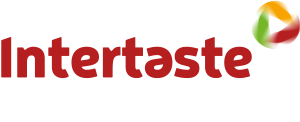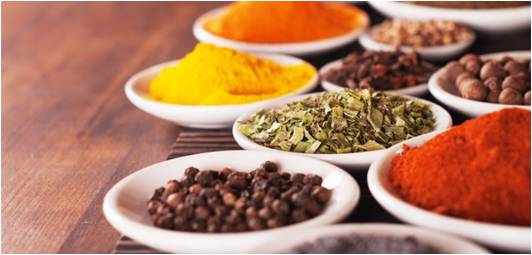Switch to quality-conscious thinking
With e-nose Intertaste is ready for the future
Close to Rotterdam in the village of Puttershoek, Intertaste processes herbs and spices for food manufacturers and large retailers. In 3 years time, this organisation has undergone a true transformation in the field of quality assurance; from limited sensory knowledge to a widely supported quality awareness. With the investment in an E-Nose in 2014, the company made a leap forward with which they distinguish themselves in the field of quality in the market.
“We were looking for an instrument to correlate the aroma components, the precious elements of a product, with the sensory perceptions of the taste panel.”
“What struck me was that there was actually little knowledge in the sensory field, i.e. man in combination with the natural tastes and aromas, i.e. herbs and spices. There was also no analytical foundation present”, says Marc Jansen, Spices Flavourist of Intertaste. He joined the organisation about 3.5 years ago. “Initially, the idea was that pepper was just pepper and coriander was just coriander. We had to invest in people to experience that one coriander is not the other. Does material come from Eastern Europe or Morocco? You just taste and smell the difference.”
Marc comes from the fragrance and flavouring industry and worked for an American Flavour house for over 19 years. He was used to thinking in aroma components and materials and worked with sensory experts and GC analysts who already built libraries of components.
So for him it was a challenge to use his knowledge and experience to transform the until then traditionally operating Intertaste.
Back to basics
The first step was taken 3 years ago with the setting up of a sensory panel. For the panel, 32 people were selected from the 3 branches in Puttershoek, Utrecht and Nijkerk, working in different departments within Intertaste, thus reflecting the organisation. This included people from the quality department, product development, but also commercial people and even members of the board of directors.
“With these people, we went all the way back to basics. In intensive training they learned our “scent language”. This includes 56 attributes in the basics. This is about the maximum you can train people who do this in addition to their standard tasks within Intertaste. However, you do have a nice pallet with which you can start describing raw materials.
“The nice thing about the E-nose is that in the linked database you build up and record all the acquired knowledge. The database makes it easy to transfer this data, so that continuity is always guaranteed during personnel changes”.
“We really started to teach people the language at component level. For example, what is citrus and what is cardboard? After internal training, a number of people have developed into experts and of these, 15 to 16 are currently assessing only the loose herbs and spices. Not only do they now master the language, but they have also been trained on the products that Intertaste processes. In the future, the blends of herbs will be added, the blends,” says Jansen.
The next step towards analytical substantiation of what one smells and tastes was after this training easier to sell internally, simply because one could observe the big differences for oneself. When we had trained people, they started to smell and taste better. They noticed that dubious material was regularly present on the market. This was the reason to investigate this phenomenon better in order to find out what was going on.
Analytical research by Wageningen Food Safety and Research (WFSR)
“We then contacted Professor Saskia of Ruth at the research institute WFSR, part of Wageningen University. They have state-of-the-art equipment with which Professor van Ruth carried out an analytical study for us. The aim of this research was to be able to detect fraudulent batches of ground nutmeg from material available in retail outlets. In fraudulent batches, up to 80% ‘spent’ is added. This is the residue of the ground nutmeg from which the precious essential oils have been extracted. For the producer this can be very lucrative. WFSR has developed methods to demonstrate these cuts.
“Intertaste would have liked to adopt WFSR’s methods, but in terms of investment it was not feasible to copy them. This study has helped us enormously to realise that there are competitors on the market who make it difficult for us to price unfair material. If you explain that to commercial people and show that it is sensory perceptible, then you have the right arguments to use an analytical tool”.
“I was looking for a system that has a library in it. This has been the main reason I came up with the Alpha MOS system. In particular the combination of a solid Fast GC technique, a technique proven and embraced in the market, and the linked library that was well put together and could be used immediately. Certainly the translations of the taste I saw were correct and based on thorough literature research. So we didn’t have to do that research”.
Investment in E-nose
“We’ve been looking for an interesting tool that will allow us to look at the basics of whether the aroma components, i.e. the precious elements of a product, can be correlated to the sensory perceptions of the taste panel.
“In this respect, we arrived at the Heracles II E-Nose of Alpha MOS at the beginning of 2014. The reason we opted for this is that we realised that we did not have the time to set up such a study all by ourselves and figure out how to set up a library. So from the start I was looking for a system that has a library in it so that you don’t have that backlog. This was the main reason I came up with the Alpha MOS system. There we saw the combination of on the one hand an instrument with a technique proven and embraced in the market, a solid Fast GC technique, but linked to a library that was well put together and could be used immediately. Certainly the translations of the taste I saw were correct and based on thorough literature research. So we didn’t have to do that research”.
“A nice side effect was the statistical software that’s in the same package. That made it very complete for a company like Intertaste. The collected data can therefore immediately be processed statistically into a usable plot, a control chart, and thus a clear representation of the research. It makes the interpretation of data a lot easier and more fun”.
Manage expectations
“You still have to feed the instrument with measurement data in combination with the findings of the sensory panel. That costs time and manpower and therefore money. That can be a pitfall to get this to land properly within an organisation. Intertaste also had to explain this well. In the meantime, this has landed well and has been fully accepted. The first few months the expectations were of course too high. “I would like to give everyone who is considering purchasing the E-nose not to forget the aspect of ‘managing expectations’ because it really is a very important part. If this is done well then the possibilities are incredible”.
Securing knowledge
“The great thing about the E-nose is that you build up and record a lot of knowledge. The moment the analyst leaves, you hire another analyst who can continue on the basis of all the data you already have. If you only work with a sensory panel, that’s different. If you have a progression in that, you can start building knowledge again. With the E-nose you can better guarantee the continuity of the organization in the long term”.
Trend towards sustainable and fair trade
When asked whether customers themselves see added value from the E-nose, Jansen answers: “By now they do. We have sat around the table with a number of large retailers. They have realised that cheap is often really expensive and that there is a chance that you will be misled. The awareness is there that the price war that is currently raging drives producers to despair. It’s all about the price. Look at the meat affairs. This happens within the herbs and spices as well. The temptation to blend in is getting bigger and bigger for producers to get that order. At a high level and driven by consumer organisations and the Dutch Food and Consumer Product Safety Authority (NVWA), a counter-movement has really taken off. The awareness is really growing that this has to stop. This means that a 100% transparent, honest and good product has a different price tag. But that is sustainable.”
Explain price tag
“The essence is that we want to offer a transparent and honest product that meets the consumer’s expectations. They ultimately pay for it and that’s what it’s all about. You can fool them, but in the end it’s going to cut into your fingers. We are convinced of that and that is our vision. In addition, we will have to continue to do our best to keep the price reasonable for the customer and sometimes think about alternatives”.
Research and marketing
“It doesn’t alter the fact that we use the E-nose for research as well. Research in the broadest sense of the word. For example, if a customer comes up with a specific question that can be picked with the E-nose, but also to develop new products themselves.
If you know the products well, you can recognise new trends within herbs and spices in the form of herb mixes (blends). By analyzing the herbal blends with the E-nose, we are already gaining experience to be able to conduct research on blends in the future. Currently the use is 50-50; so 50% quality related measurements and 50% research.
Sight to the future
“We’re still busy setting up a good database for each raw material. So analyzing black pepper, ginger and coriander from different batches over the years based on the information provided by the sensory panel.
This post is also available in: Dutch



